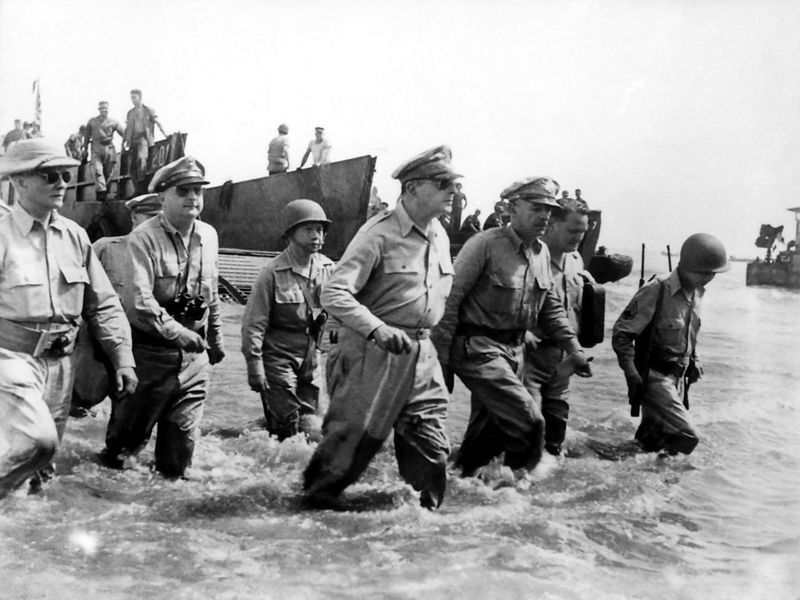The involvement of the Americans in the Philippines is considered to be a pivotal moment for the Southeast Asian country, as it is through the United States that the country was able to gain their freedom for at least two times in history, although the freedom that it got for the first time came with a price. To know more about the influence of the American government in the country during specific eras, let us take a look at the history of American involvement in the Philippines.
The aftermath of the Spanish-American War
In the aftermath of the Spanish-American War, which was won by the Americans, both parties agreed to sign a treaty on December 10, 1898 in Paris France. Under this treaty, now known as the Treaty of Paris of 1898, the Spanish government will relinquish their occupation of Guam, Puerto Rico, and the Philippines to the American government, as well as give Cuba temporary freedom. With the signing of the treaty, the United States owned the Philippines legally, although the First Philippine Republic, which was created after the Spanish were ousted from the country, objected the ruling in the treaty. The disagreements between the United States and the Philippines eventually led to the Philippine-American War.
Philippines as a US Commonwealth
When the Americans won the Philippine-American War, the Philippines officially became a US commonwealth on November 15, 1935. During the period of the Americans’ occupation of the Philippines, the First Philippines Republic was abolished and was replaced by the Commonwealth of the Philippines, which was led by Manuel L. Quezon of the Nacionalista Party. This commonwealth was formed under the principles of the US Consitution, meaning that the laws and regulations that were followed in the country resemble those found in American soil. Despite the Americans having control of the Philippines, the country was allowed to create a Supreme Court that is comprised of only Filipino members.
In addition to the all-Filipino Supreme Court, the Americans were also instrumental in the prosperity of the country during the 1930s and the early 1940s, where the Philippines conducted reforms in education, industrialization, and the expansion of its territory by colonizing the southern island of Mindanao. However, there were some Filipino groups that were unsure of the Americans’ intentions in the Philippines, as the prosperity may just be a trap to further gain the trust of the country’s people and backstab them in the future. Fortunately, the backstab didn’t happy, even until the Japanese occupation during World War II, as the Americans were partly responsible for driving the Japanese away from the Philippines.
Japanese Occupation in World War II
During World War II, several Japanese military factions forced their way in the Philippines and engaged in a battle against the Filipinos and Americans. The battle started on December 8, 1941, after the Japanese moved from Formosa (now Taiwan) to the northern regions of the Philippines. Even though the Japanese forces were outnumbered during the battles to invade the Philippines, they surprisingly won most of the fights, thus allowing them to conquer Luzon, which was considered as the most important island in the country. At the end of the battle on May 8, 1942, the Japanese were successfully in occupying the Commonwealth of the Philippines, and General Douglas McArthur, the leader of the American forces in the Philippines, was forced to retreat to Australia. Many American and Filipino soldiers were left in the hands of the Japanese, and these soldiers were forced to participate in the Bataan Death March, where about 10,000 soldiers were killed.
Although Japan had complete control of Luzon during their three-year occupation from 1942 to 1945, there are about 60% of the country’s islands that are still protected by Filipino forces. An effective guerilla campaign by the defending Filipinos was proven to be effective, as the soldiers were more adept to the terrain (jungles and mountains), thus having an advantage against the invading Japanese soldiers that were unfamiliar to the areas they are assigned to conquer. In addition, McArthur was still giving support to the soldiers in the Philippines by providing them with vessels and reinforcements. Despite having a bitter relationship with Americans, the Filipino forces trusted McArthur and his soldiers not only because of the useful reinforcements that the general provides but also because of the promise of the American government to give the country its independence after the war if the Filipinos let them help.
General Douglas McArthur returned to the Philippines in October 1944 with the intention of reconquering Luzon, although they would still need to defeat the Japanese in the Visayan Islands. McArthur and his soldiers first landed in Leyte, and soon after, they recaptured the said island and the nearby Mindoro Island as well. After their campaign in Visayas, McArthur then moved north to recapture Luzon, specifically the Malacanang Palace. The Japanese forces in the Philippines eventually surrendered to the Americans and Filipinos on August 15, 1945, a few days after the American government dropped two atomic bombs in the Japanese cities of Hiroshima and Nagasaki which eventually lead to dramatic changes in Japan and its culture.
The American occupation of the Philippines would continue a few months after World War II, but the promise of Philippine independence by the Americans was not ignored and forgotten by the Filipinos. As a result of the promise, the Treaty of Manila was signed by both parties on October 22, 1946, and this treaty sought the freedom of the Philippines, the abolishment of the country’s commonwealth government, and the creation of the Republic of the Philippines.



